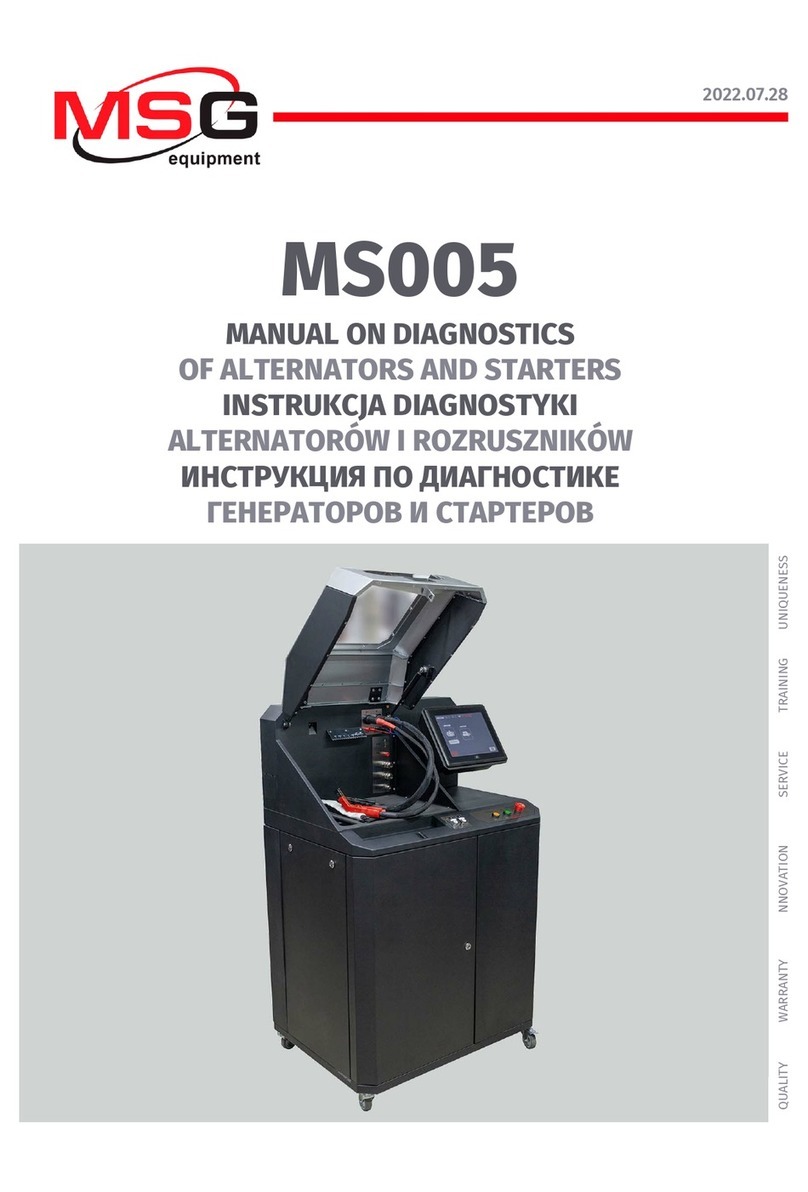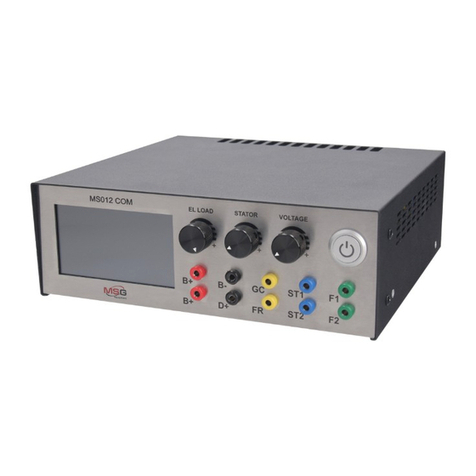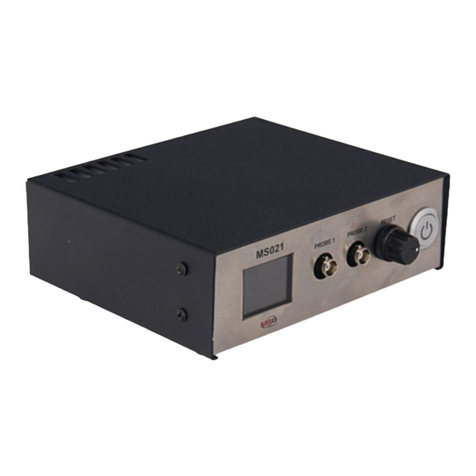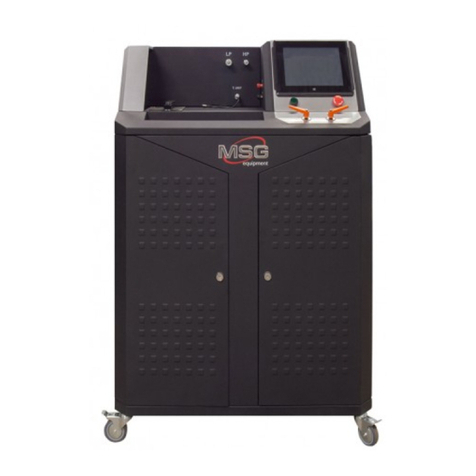
2
User Manual - Tester MSG MS012 COM
1. DESCRIPTION .......................................................................................................................................................3
2. TECHNICAL CHARACTERISTICS........................................................................................................................4
3. CONTROL UNITS..................................................................................................................................................6
3.1 Display...........................................................................................................................................................6
3.2 Buttons and Adjustment Knobs ...........................................................................................................9
3.3 Terminals......................................................................................................................................................10
4. TESTING MODES DISPLAY DATA OUTPUT OF VOLTAGE REGULATORS...................................................10
4.1 Display Data Output when Testing a Voltage Regulator with COM Terminal...........................10
4.2 Display Data Output when Testing a Voltage Regulator with RLO Terminal............................12
4.3 Display Data Output when Testing a Voltage Regulator with SIG Terminal ............................. 12
4.4 Display Data Output when Testing a Voltage Regulator with P-D Terminal ............................13
4.5 Display Data Output when Testing a Voltage Regulator with C Terminal.................................14
4.6 Display Data Output when Testing a Voltage Regulator with D+, 61, L, IL Terminals ............14
5. STEP-BY-STEP INSTRUCTION..........................................................................................................................15
6. TEST CERTIFICATE...............................................................................................................................................16
APPENDIX 1.................................................................................................................................................................17
APPENDIX 2.................................................................................................................................................................19
CONTENTS




































